Spells of Genesis
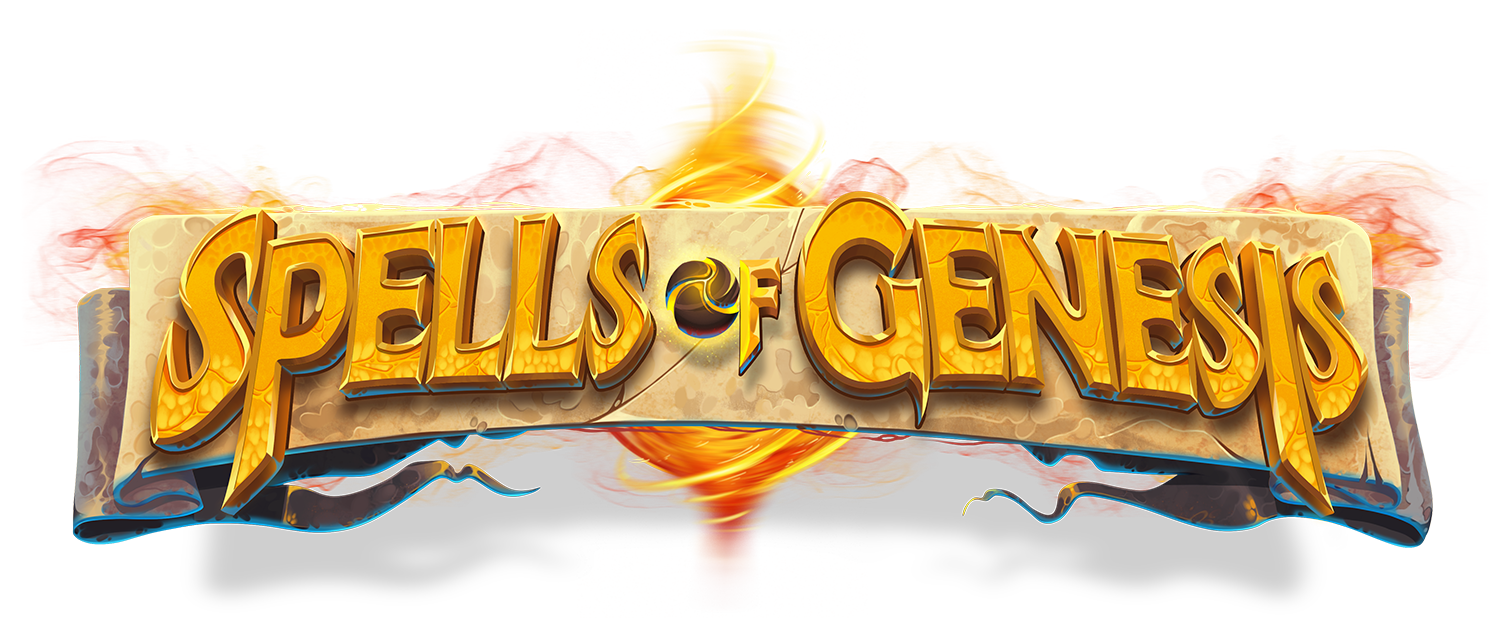
Spells of Genesis (SoG) is a pioneering blockchain card collection that features iconic figures and pivotal moments in blockchain history. It is also a title of a mobile trading card game that incorporates these collectible cards.
Widely regarded as the first-ever mobile blockchain game, SoG stands as one of the earliest examples of using the Bitcoin blockchain - specifically through Counterparty - for a non-financial application.
The Card Collection
The Spells of Genesis (SoG) historical series began with FDCARD, the very first blockchain card, minted on March 11, 2015. Since then, the collection has continued to grow, with new cards still being created and added today.

FDCARD - The Healing Formula
Issued in collaboration with Folding Coin, the only way to receive one of the 300 FDCARDs was to participate in the “folding” process, during a limited period of 75 days, from March 13 to May 26, 2015.
Folding Coin is a project compensating participants (“folders”) in the “Folding at home” program for sharing their computational power. “Folding at home” is a Stanford University’s research program, aimed at protein computing simulations, which would hopefully help to cure such diseases as cancer or Alzheimer’s.
Folding Coin rewards regularly all the folders with FLDC (FoldingCoin) tokens. Both EDS and Folding Coin were happy to cease the opportunity of a unique collaboration, to enhance the community spirit of its participants on the Folding Coin side, and to immortalize, in an allegorical way, an outstanding blockchain project, for EDS.
The SoG collection now includes two distinct types of cards: “blockchain native” and “blockchainized” cards.
Blockchain native cards are minted directly on the Bitcoin blockchain using the Counterparty protocol. In contrast, blockchainized cards originate as in-game assets within the Spells of Genesis game, and players have the option, under certain conditions, to convert them into blockchain assets.
Today, the Spells of Genesis collection counts almost 300 blockchain cards (both native and blockchainized ones) on the Bitcoin blockchain.
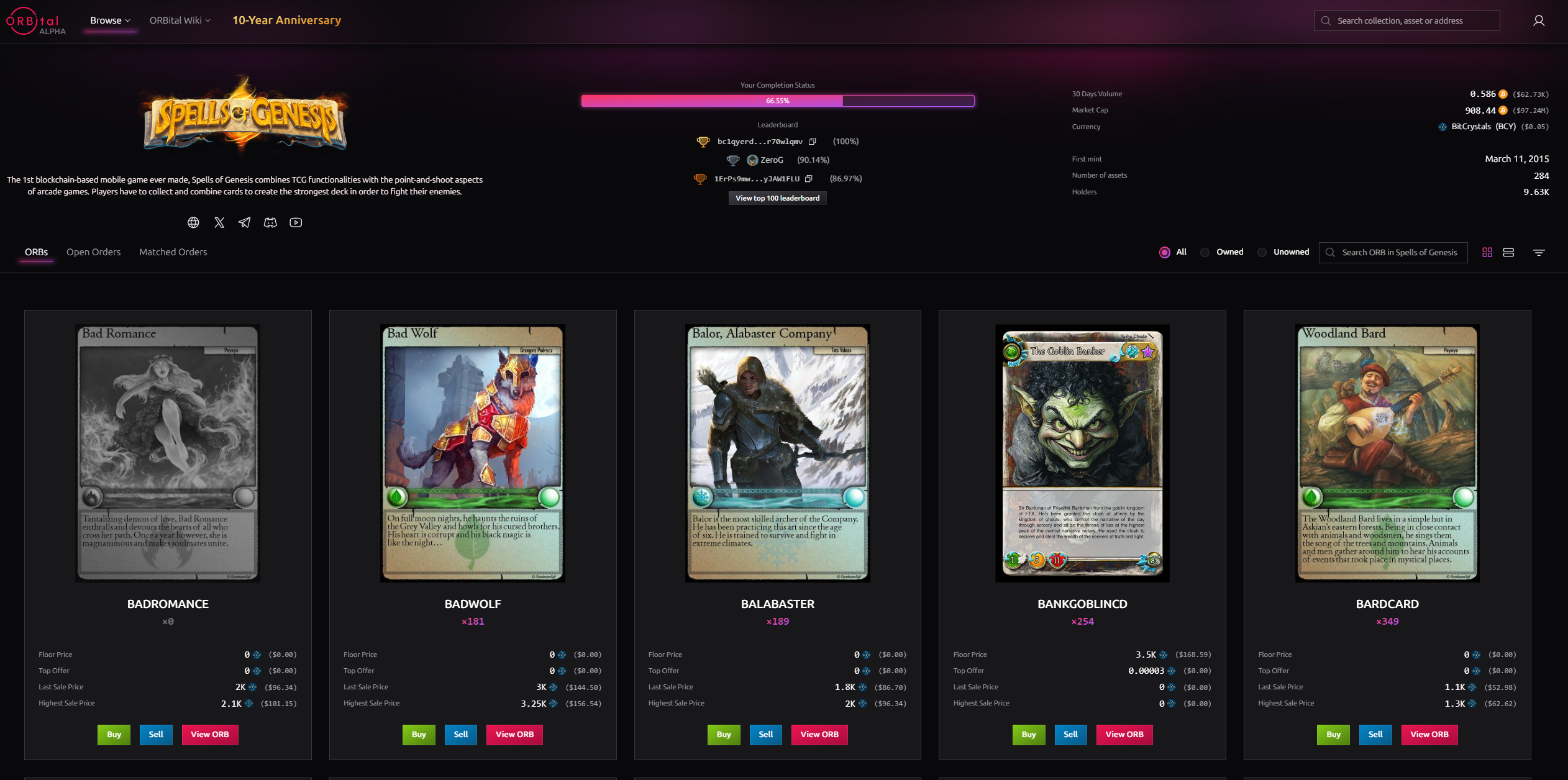
All the blockchain native ORBs were minted in limited series, meaning that each illustration exists in several identical copies. In opposition to the blockchain-native cards, the blockchainized ones do not have a supply limit. These cards are first minted on “First Oasis” chain (Kaia, formerly Klaytn) and users can later swap them for either a Counterparty, or Ethereum-based copy.
In 2020, following the rise of Ethereum and Ethereum-based NFTs, several copies of some SoG cards were intentionally destroyed and reissued on Ethereum, aiming at making the collection accessible for Ethereum-native collectors.
Still, if you want to be sure you own a true piece of blockchain history, opt for the initial Counterparty-based ORBs!
Discover the Spells of Genesis collection on ORBital!.
The Blockchain Allegories
Spells of Genesis cards serve as vivid allegories, meticulously chronicling key events, outstanding projects and iconic personalities from the early years of blockchain and cryptocurrency.
Blending fantasy and reality, SoG cards tell the stories that shaped the blockchain world we know today and capture these moments forever. Each card turns into a historical artifact, becoming part of the blockchain history on its turn.
The game's fantasy world of Askian, with its struggle against the oppressive Daryen Empire, is a direct metaphor for the clash between traditional, centralized finance and the emerging, decentralized Web3 ecosystem. Each tribe and guild within Askian represents various Web3 projects, battling for a decentralized future.
Among the most notable examples of blockchain world allegories turned into SoG blockchain cards we can find the ones mentioned below.
SATOSHICARD - Satoshi, Creator of Blockchain
The SATOSHICARD, one of the most iconic cards is a homage to Satoshi Nakamoto, the enigmatic creator of Bitcoin. Its rarity and significance within the SoG ecosystem mirror Nakamoto's foundational role in crypto space.
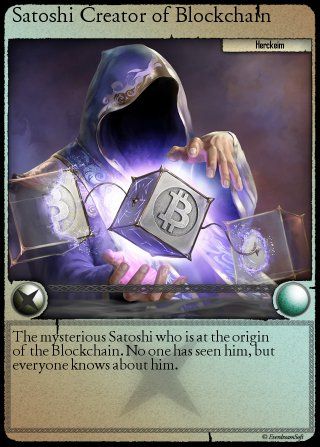
GOXCARD - The Theft of Mount Gox
The GOXCARD depicts the infamous Mount Gox exchange hack, hinting at the early vulnerabilities and challenges faced by the cryptocurrency world.
Launched in 2010, Mt. Gox was handling over 70% of all bitcoin transactions worldwide by early 2014, when it abruptly ceased operations amid revelations of its involvement in the loss/theft of hundreds of thousands of bitcoin, then worth hundreds of millions in US dollars.
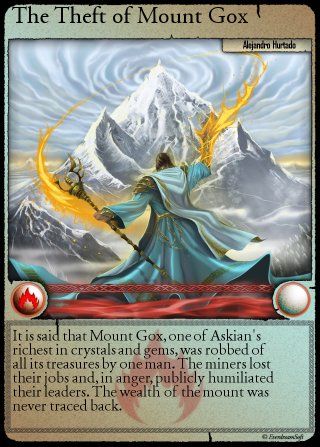
DOGECOINCARD - Coins for Doge
The DOGECOINCARD depicts the famous Dogecoin meme, and the currency that was inspired by this pop-culture phenomenon. Witnessing the rise of the early alternative cryptocurrencies, DOGECOINCARD also points out the diversification of the crypto landscape beyond Bitcoin, reflecting the burgeoning ecosystem of digital assets.
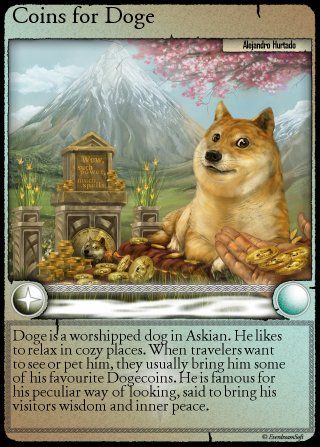
BLOCKSIZECD - Battle for Blocksize
The BLOCKSIZECD directly references the contentious Bitcoin "block size" debate, a significant ideological and technical struggle within the Bitcoin community regarding scalability and the future direction of the network. It represents the early tensions and disagreements that shaped Bitcoin's development.
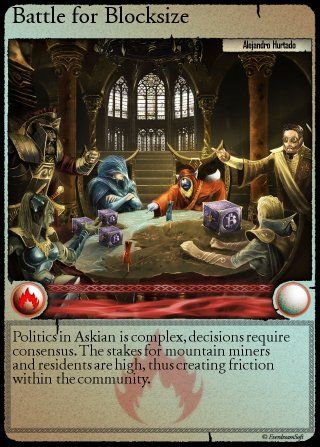
DAOSOGCARD - Colossus of Dao
The DAOSOGCARD is inspired by the concept of a Decentralized Autonomous Organization (DAO), an organization with a governance based on a decentralized voting and consensus system.
Funny enough, the card depicting a DAO as an invincible community-powered colossus, was released exactly the same day the famous “The DAO” hack occurred.
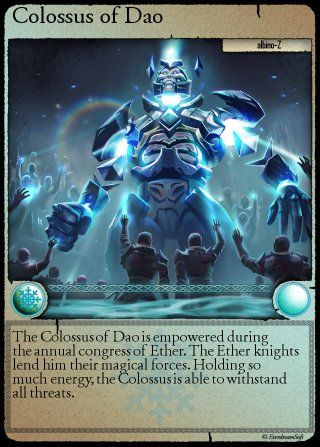
Will you find ALL the allegories hidden in the Spells of Genesis card collection?